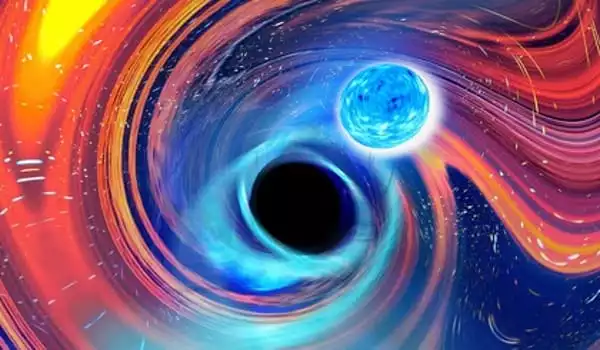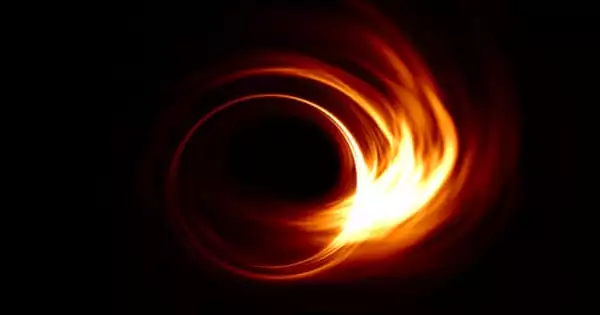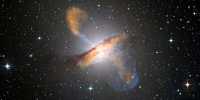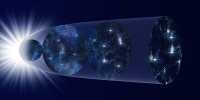The size of black holes varies. At the heart of most local, massive galaxies are thought to be a supermassive black hole (hundreds of thousands to billions of times the mass of our Sun). Other black holes, much smaller in size, are collapsed stars. Though no light can escape from a black hole, we can detect when a matter is drawn into one. A supermassive Black Hole (SMBH) is thought to exist in the center of all large galaxies, including the Milky Way. When those SMBHs are actively accreting matter, they can emit a wide range of radiation, from radio waves to gamma rays.
The Universe is teeming with energetic particles like X rays, gamma rays, and neutrinos. However, the origins of the majority of high-energy cosmic particles remain unknown. An international research team has now proposed a scenario that explains these phenomena: low-activity black holes act as major factories of high-energy cosmic particles. Their findings were published in the journal Nature Communications.
Gamma rays are extremely energetic photons that are many orders of magnitude more powerful than visible light. Cosmic gamma rays with energies ranging from mega electron to giga electron volts have been detected by space satellites.
The Universe is filled with energetic particles, such as X rays, gamma rays, and neutrinos. However, most of the high-energy cosmic particles’ origins remain unexplained.
Neutrinos are subatomic particles with near-zero mass. They rarely come into contact with ordinary matter. High-energy cosmic neutrinos have also been measured by researchers at the IceCube Neutrino Observatory.
Both gamma rays and neutrinos should be produced by powerful cosmic-ray accelerators or the Universe’s surrounding environments. Their origins, however, remain unknown. Active supermassive black holes (also known as active galactic nuclei), particularly those with powerful jets, are widely thought to be the most promising emitters of high-energy gamma rays and neutrinos. Recent studies, however, have revealed that they do not explain the observed gamma rays and neutrinos, implying that other source classes are required.
The new model demonstrates that non-active, “mellow” black holes, which act as gamma-ray and neutrino factories, are just as important as active black holes.

When a black hole is at the center of a galaxy, it can spew massive amounts of energy outward, often in the form of powerful jets or particle streams. X-rays and gamma rays are two types of energy emitted. Scientists have recently discovered that the birth of a black hole is frequently signaled by a massive burst of gamma rays.
At their cores, all galaxies are expected to have supermassive black holes. A massive amount of gravitational energy is released when matter falls into a black hole. The gas is heated in this process, resulting in high-temperature plasma. Because of inefficient cooling, the temperature of low-accreting black holes can reach tens of billions of degrees Celsius, and the plasma can generate gamma-rays in the mega-electron volt range.
As individual objects, such mellow black holes are dim, but they are numerous in the Universe. The researchers discovered that the gamma rays produced by low-accreting supermassive black holes may contribute significantly to the observed gamma-rays in the mega-electron volt range.
Protons in plasma can be accelerated to energies 10,000 times greater than those attained by the Large Hadron Collider, the world’s largest man-made particle accelerator. Through interactions with matter and radiation, the accelerated protons produce high-energy neutrinos, which can account for the higher-energy component of the cosmic neutrino data. Previous research has shown that this picture can be applied to active black holes. A large fraction of the observed IceCube neutrinos in a wide energy range can be explained by supermassive black holes, which include both active and inactive galactic nuclei.
Future multi-messenger observational programs will be critical in determining the source of cosmic high-energy particles. The proposed scenario predicts gamma-ray counterparts to neutrino sources in the mega-electron volt range. Most existing gamma-ray detectors are not tuned to detect them; however, future gamma-ray experiments, in collaboration with next-generation neutrino experiments, will be able to detect multi-messenger signals.















